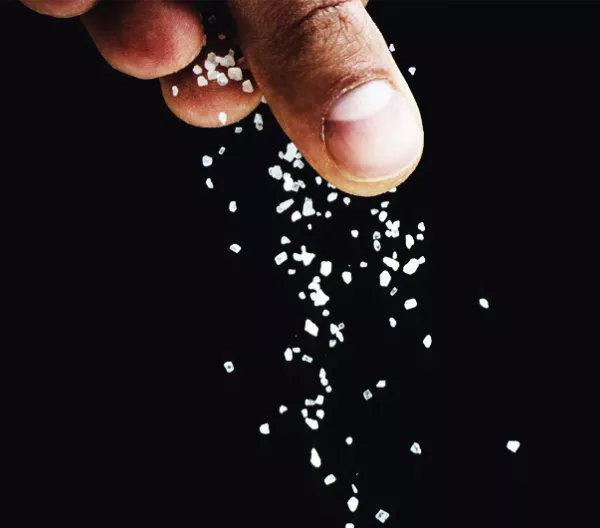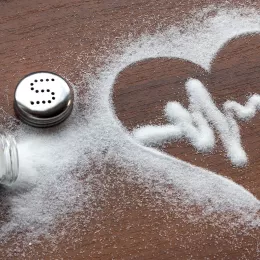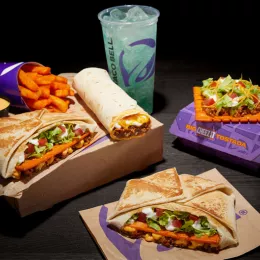Chemical Cuisine Rating
Cut Back
Purpose: Flavoring, preservative
Health Concerns: Cardiovascular
Found in: Most processed foods, cured meats, soup, snack chips, crackers, and others
Salt, at the levels present in the diets of most people around the world, is probably the single most harmful substance in the food supply. Salt is used liberally in many processed foods and restaurant meals, with some meals containing far more than a day's worth of sodium. Other additives, such as monosodium glutamate and sodium benzoate, contribute additional sodium. Salt serves many purposes in foods, such as acting as a preservative, adding a salty flavor, masking bitter flavors, and fostering expected texture or other property.
A diet high in sodium increases blood pressure in most people, thereby increasing the risk of heart attack and stroke. In 2004, the director of the U.S. National Heart, Lung, and Blood Institute and two colleagues estimated that cutting the amount of sodium in packaged and restaurant foods by half would save 150,000 lives a year. Everyone should avoid salty processed foods and restaurant meals, use salt sparingly in cooking and at the table, and enjoy other seasonings.
The Food and Drug Administration considers salt to be "generally recognized as safe" (GRAS), even though it recognizes that diets high in salt are a major cause of cardiovascular disease and even though its own advisory committee in 1979 concluded that salt should not be considered GRAS. In 1978 and 2005 the Center for Science in the Public Interest petitioned the FDA to revoke salt's GRAS status and take other steps to lower sodium levels in the food supply. In response, the FDA held a public hearing in November, 2007. Meanwhile, the British government has made salt reduction one of its top health goals and has been having significant success.
Many companies defend the amounts of salt used, saying that using less would sacrifice taste or safety. However, comparisons of different brands of the same product frequently show wide differences in sodium content. That indicates that many companies could use less salt (or other sodium-containing ingredients) to the levels used by competitors and still have perfectly marketable products.
Back to Chemical Cuisine














